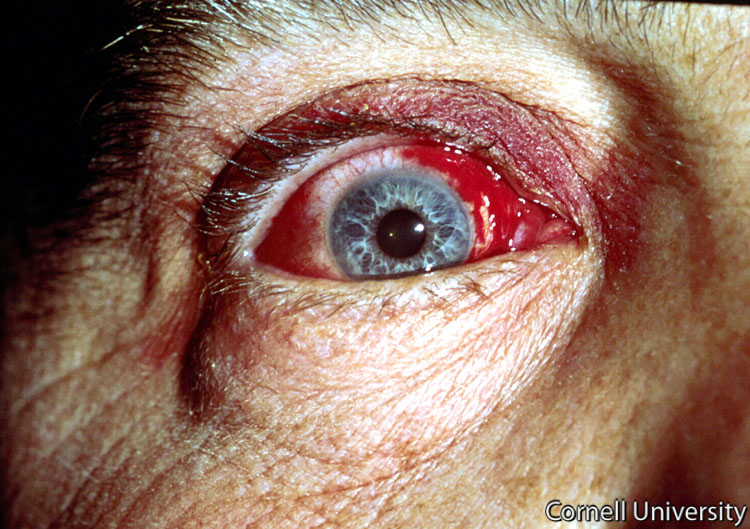Submitted by admin on Tue, 08/26/2008 - 15:40
Clinical Signs:
Conjunctivitis (eyes)
Morphologic diagnosis:
Conjunctiva: Severe acute conjunctivitis with hemorrhage
Clinical description:
Newcastle disease virus can occasionally infect humans, causing transient conjunctivitis of the eyes. The infection normally occurs in poultry workers or laboratory personnel who come into contact with the virus via infected birds or lab samples or through exposure to aerosol vaccines. Clinical signs typically consist of conjunctivitis (redness and excessive lacrimation), eyelid edema, and subconjunctival hemorrhage. The infection is self-limiting and there are no reports of human-to-human spread. Newcastle disease has not been reported to occur naturally in other non-avian species.
Pathologic description:
The conjunctiva is diffusely red and swollen.
Record number:
8242
Case number:
Unknown
Clinical form:
Unknown
Infection type:
Unknown
Housing/mgmnt type:
Select One
Priority:
1
Rights:
© Cornell University
Etiology:
Exam findings:
Tissues and organs:
Asset type:
Species:
Image:

- Log in to post comments
